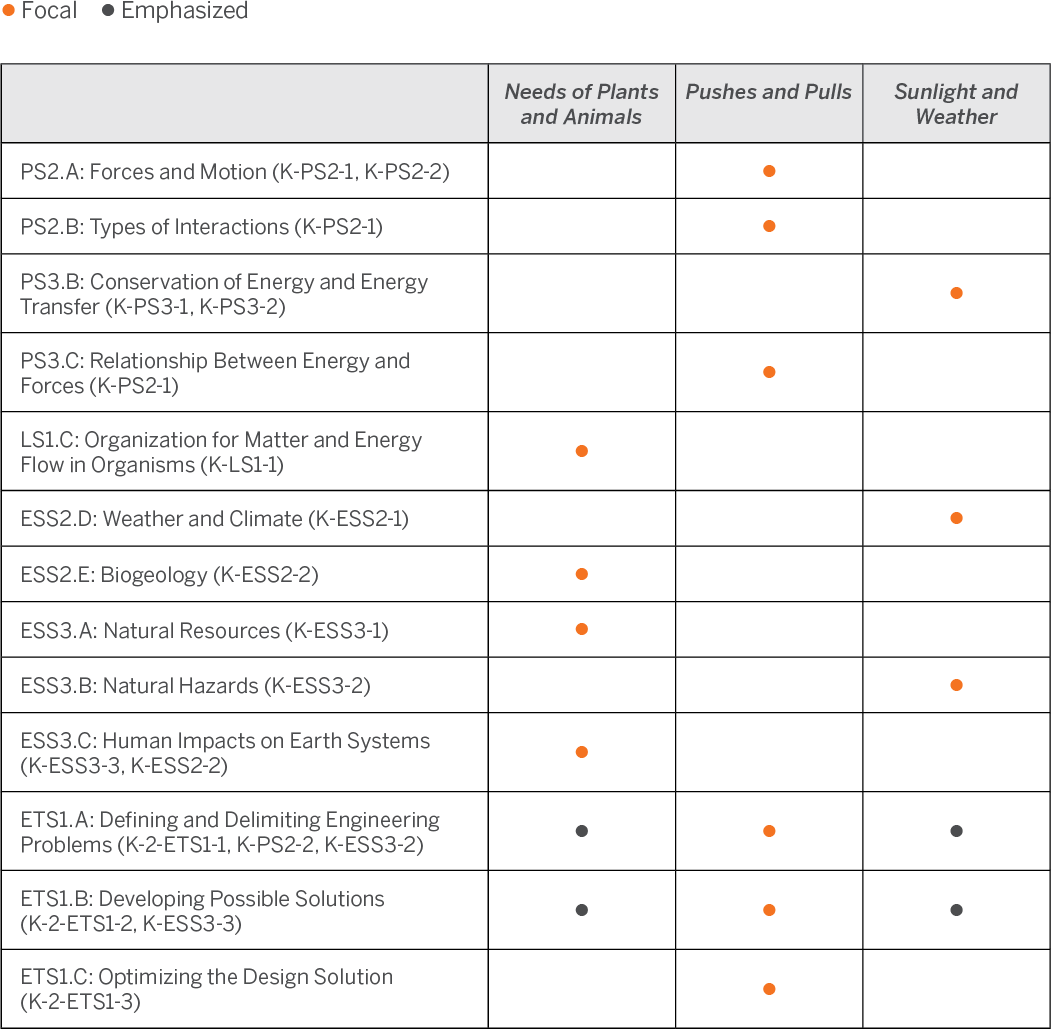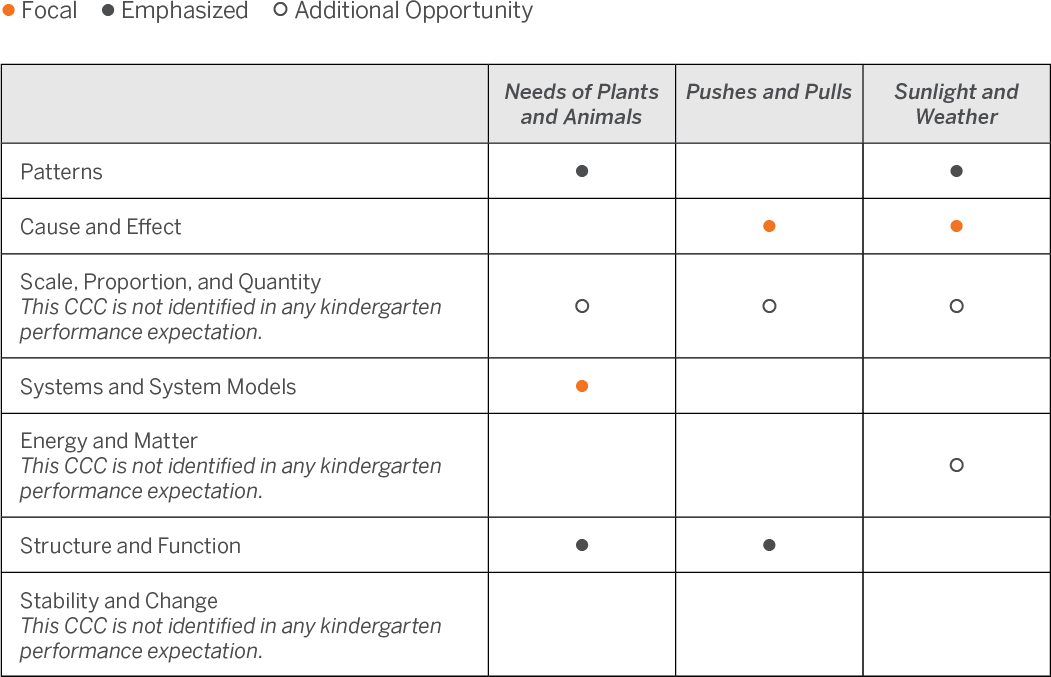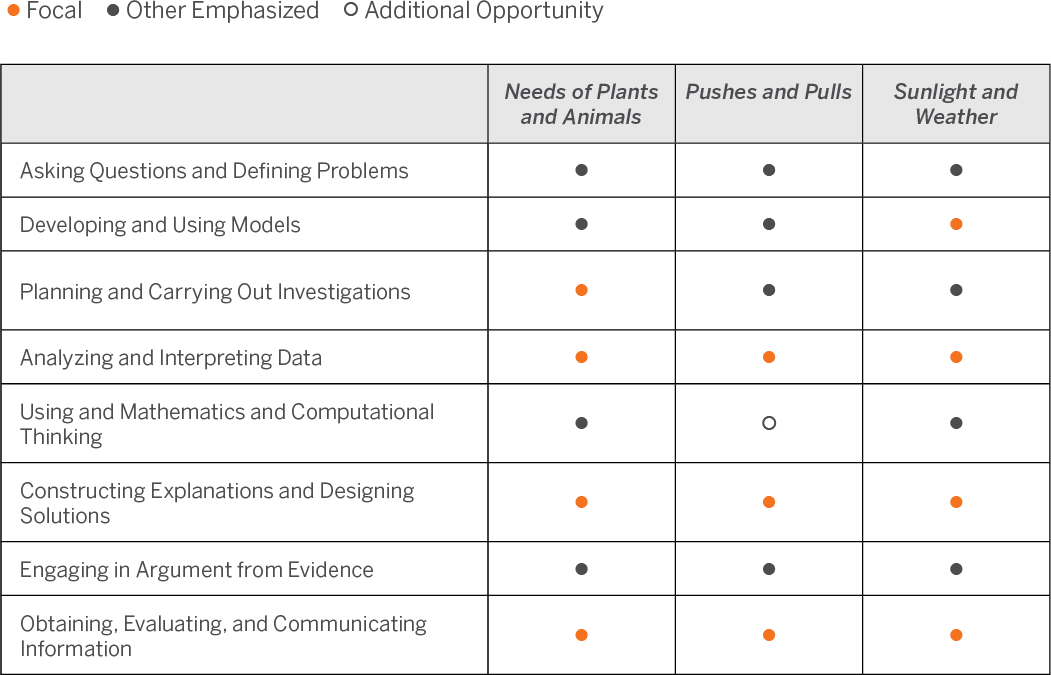Kindergarten
The Amplify Science kindergarten program progressively builds students’ abilities to meet all grade-level performance expectations through a three-dimensional instructional sequence. The following is an overview of the sequence of units, a description of the progression of student learning across the year, and a summary of how the sequence meets all performance expectations for kindergarten.
Sequence of units
- Needs of Plants and Animals
- Pushes and Pulls
- Sunlight and Weather
Needs of Plants and Animals
- K-LS1-1: Survival Needs
- K-ESS2-2: Impacting Environment
- K-ESS3-1: Qualities of a Habitat
- K-ESS3-3: Reducing Impacts
- K-2-ETS1-1: Defining the Problem
- K-2-ETS1-2: Developing Possible Solutions
Pushes and Pulls
- K-PS2-1: Pushes and Pulls
- K-PS2-2: Change Speed and Direction
- K-2-ETS1-1: Defining the Problem
- K-2-ETS1-2: Developing Possible Solutions
- K-2-ETS1-3: Comparing Different Solutions
Sunlight and Weather
- K-PS3-1: Sunlight on Earth’s Surface
- K-PS3-2: Reducing Warming
- K-ESS2-1: Weather Patterns
- K-ESS3-2: Preparing for Severe Weather
- K-2-ETS1-1: Defining the Problem
- K-2-ETS1-2: Developing Possible Solutions
- K-2-ETS1-3: Comparing Different Solutions
Progression and organization
The units in the kindergarten course were designed and sequenced to build students’ expertise with the grade-level disciplinary core ideas (DCIs), science and engineering practices (SEPs) and crosscutting concepts (CCCs) while simultaneously considering the dimensions of kindergartners’ language, social-emotional, and physical development across the school year. Each unit has focal SEPs and CCCs, carefully selected to support students in figuring out the unit’s focal DCIs.
Students begin the year with a focus on the survival needs of plants and animals in the Needs of Plants and Animals unit. Throughout the unit, students take on increasing responsibility for the focal SEP of Planning and Carrying Out Investigations as they conduct investigations to figure out, and construct an explanation about, what plants and animals need to survive in a place. The focal CCC of Systems and System Models supports students in understanding the interactions between different parts of a habitat system and how those parts contribute to plant and animal survival. In the Pushes and Pulls unit, students continue to plan and carry out investigations, but this time they are focused on testing designs to meet a set of design goals for moving a pinball in a pinball machine. Students engage in iterative cycles of Designing Solutions, the unit’s focal SEP, to apply what they have learned about the strength and direction of forces to their designs. A focus on the CCC of Cause and Effect helps students explain the relationships between forces and how an object moves. Finally, students end the year with the Sunlight and Weather unit, when nicer weather allows for observing and measuring temperatures outdoors. Students engage in the focal SEP of Developing and Using Models as they use physical models to investigate how light shining on surfaces changes the temperature of the surfaces and apply the focal CCC of Cause and Effect to construct explanations about why surfaces warm differently.
The DCIs emphasized in each unit work together to support deep explanations of the unit’s anchor phenomenon. For example, in the Needs of Plants and Animals unit, investigating why there are no monarchs living in the garden leads students to construct ideas about LS1.C: Organization for Matter and Energy Flow in Organisms (DCI LS1.C), Human Impacts on Earth Systems ( DCI ESS3.C), Biogeology (DCI ESS2.E), and Natural Resources (DCI ESS2.E).
Disciplinary core ideas

Crosscutting concepts

Science and engineering practices
